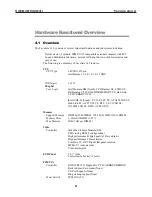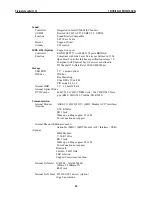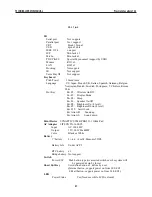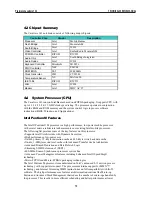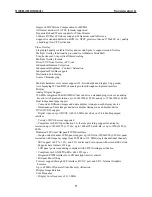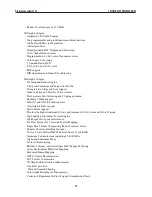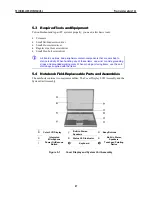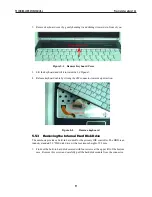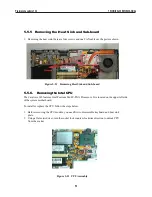
‧
Color Specular Lighting
‧
Z Bias support
‧
Dithering
‧
Line and Full-Scene Anti-Aliasing
‧
16 and 24-bit Z Buffering
‧
16 and 24-bit W Buffering
‧
8-bit Stencil Buffering
‧
Double and Triple Render Buffer support
‧
16 and 32-bit color
‧
Destination Alpha
‧
Vertex Cache
‧
Maximum 3D resolution of 1600x1200 at 85- Hz (contact your Intel Field
Representative for detailed display information, i.e. pixel depths, etc.)
‧
Optimal 3D resolution supported
‧
Fast Clear support
‧
ROP support
4.10.2
Video Clock
Intel 852GM North Bridge provides input to generate VGA internal slate machine, MCLK,
and DCLK. Also provides 32.768 KHz O/P for video RAM refresh.
4.11 PCMCIA Controller
The PCMCIA controller of the notebook is implemented on the motherboard using the
RICOH R5C551 CardBus Controller. The Cavaliere 142 notebook only supports single
PCMCIA slot for PCI-Cardbus Bridge.
CARDBUS CONTROLLERS
The R5C551 is an ACPI and PC98/99 logo certified high performance, single slot PC Card
controller with a synchronous 32-bit bus master/target PCI interface. This PC Card to PCI
bridge host controller is compliant with the 2000 PC Card Standard. This standard
incorporates the new 32-bit CardBus while retaining the 16-bit PC Card specification as
defined by PCMCIA release 2.1. CardBus is intended to support "temporal" add-in
functions on PC Cards, such as Memory cards, Network interfaces, FAX/Modems and
other wireless communication cards, etc. The high performance and capability of the
CardBus interface will enable the new development of many new functions and
applications.
The R5C551 CardBus controller is compliant with the latest ACPI-PCI Bus Power
Management interface Specification. It supports all four power states and the PME#
function for maximum power savings and ACPI compliance. Additional compliance to On
Now Power Management includes D3 cold state support, paving the way for low sleep
state power consumption and minimized resume times. To allow host software to reduce
power consumption further, the R5C551 provides a power-down mode in which internal
clock distribution and the PC Card socket clocks are stopped. An advanced CMOS process
is also used to minimize system power consumption.
The R5C551 single PCMCIA socket supports the 3.3V/5V 8/16-bit PC Card R2 cards or
TECHNICAL SERVICE MANUAL
Prestigio Cavaliere 142
79

